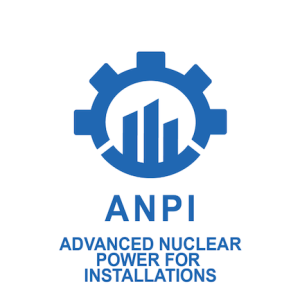 Ukraine’s Chernobyl NPP on 7 September received a permit from the State Nuclear Regulatory Inspectorate of Ukraine (SNRIU) for commissioning the interim used fuel processing and storage facility (ISF-2).
Ukraine’s Chernobyl NPP on 7 September received a permit from the State Nuclear Regulatory Inspectorate of Ukraine (SNRIU) for commissioning the interim used fuel processing and storage facility (ISF-2).
The permit allows the nuclear power plant to begin hot testing, which involves the transfer of 186 used fuel assemblies to the new storage facility, where, after processing, they will be located in concrete storage modules. The appoval followed state examination of nuclear and radiation safety and an inspection survey of the SNRIU verifying the NPP’s ability to carry out work on transportation, preparation and storage of used nuclear fuel.
“ISF-2 will make it possible not only to improve the safety level of spent nuclear fuel storage, but also to intensify the work on decommissioning the Chernobyl NPP,” said the head of SNRIU, Grigory Plachkov.
Nuclear power plant director Vladimir Peskov noted that this important milestone was achieved thanks to work of Chernobyl NPP, US-based Holtec International and its subcontractors. “Special thanks to the European Bank for Reconstruction and Development (EBRD) for supporting this project throughout the difficult path,” he said.
During operation of the Chernobyl plant, from 1977 to 2000, more than 21,000 fuel assemblies were accumulated at the station, which are now stored in the SNF-1 used nuclear fuel storage pool, which is not designed for long-term storage. Its service life will expire in 2028, and all assemblies must be moved to the SF-2 dry storage facility by then.
Holtec International in September 2019 completed pre-commissioning cold testing at the €380m ($416m) ISF-2.
The principal contractors for the ISF-2 were Ukraine's UTEM, Germany's BNG and Italy's Maloni. The project was supported funded by the Nuclear Safety Account (NSA) and the London-headquartered EBRD. Hot testing was scheduled to begin at the end of November but faced some delays.
Holtec took over the ISF-2 project in 2011 after demonstrating to EBRD and SNRIU that it had the technologies to deal with Chernobyl’s RBMK fuel. The project had begun in 1998 but stalled when the technology provided by Areva was shown to be inadequate. Holtec used the legacy systems, structures and components supplied by Areva, and acquired new replacement systems from France, Germany, Italy, the USA, and elsewhere.
The facility will process, dry and cut more than 21,000 fuel assemblies from Chernobyl 1, 2 and 3. They will then be placed in double-walled canisters and stored in concrete modules onsite for at least 100 years. Chernobyl’s RBMK reactors were shut down permanently after unit 4 was destroyed by an explosion in the 1986 accident. Unit 1 closed in 1996, unit 2 in 1991, and unit 3 in 2000.
Tests taking place inside the ISF-2 in September 2019 (Photo: Holtec International)






